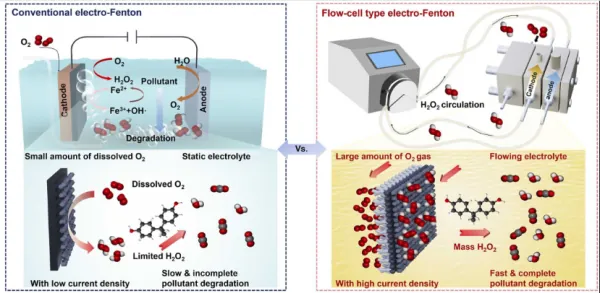
Revolutionary Wastewater Treatment Device Could Transform Pollution Management
2024-12-09
Author: Amelia
Revolutionary Wastewater Treatment Device Could Transform Pollution Management
In a groundbreaking development, researchers at the Korea Institute of Science and Technology (KIST) have unveiled a state-of-the-art electrochemical device designed to treat sewage and wastewater more effectively than traditional methods. Historically, conventional wastewater treatment relies on centralized systems that transport wastewater through pipes to large treatment plants. While this approach is efficient in urban settings, it falls short in decentralized regions, particularly rural areas where wastewater sources can be dispersed.
Current small-scale treatment solutions primarily focus on disinfection and improving clarity but do little to break down some of the more stubborn organic pollutants. This is particularly problematic for industries dealing with highly toxic wastewater, often requiring expensive and inefficient transport to remote treatment facilities.
The innovative team at KIST, led by Dr. Sang Hoon Kim and his colleagues Dr. Jong Min Kim and Dr. Sang Soo Han, has developed a device that not only treats wastewater on-site but also drastically reduces total organic carbon (TOC) levels—an important measure of water toxicity. Unlike traditional oxidation treatments, which can involve multiple re-processing steps and leave behind potentially harmful byproducts, this new methodology utilizes a specialized flow cell system to rapidly and effectively mineralize resistant organic matter, converting it into harmless inorganic substances.
The researchers demonstrated exceptional results, achieving a remarkable 93% reduction in TOC levels from 50 parts per million (ppm) bisphenol A—one of the most pervasive industrial pollutants—within just two hours. This efficiency marks a significant advancement in the realm of wastewater management, especially in areas lacking the infrastructure for large-scale treatment plants.
What sets this device apart is its continuous flow mechanism, which enhances the degradation of pollutants compared to existing technologies. With a patent pending on both the device and its processing technique, the KIST team is aiming for commercialization to make this transformative technology more widely available.
This development arrives at a critical juncture, as the South Korean government has tightened wastewater discharge regulations for the first time in nearly five decades, now incorporating TOC levels into their standards. The pressing need for effective wastewater treatment solutions has never been more apparent, and KIST's innovative approach may provide the answer.
As the world continues to confront mounting environmental challenges, technologies like this electrochemical treatment device could play a crucial role in addressing wastewater pollution. Could this breakthrough reshape our approach to managing one of our most persistent environmental issues? Only time will tell, but the potential is undeniably promising.









 Brasil (PT)
Brasil (PT)
 Canada (EN)
Canada (EN)
 Chile (ES)
Chile (ES)
 España (ES)
España (ES)
 France (FR)
France (FR)
 Hong Kong (EN)
Hong Kong (EN)
 Italia (IT)
Italia (IT)
 日本 (JA)
日本 (JA)
 Magyarország (HU)
Magyarország (HU)
 Norge (NO)
Norge (NO)
 Polska (PL)
Polska (PL)
 Schweiz (DE)
Schweiz (DE)
 Singapore (EN)
Singapore (EN)
 Sverige (SV)
Sverige (SV)
 Suomi (FI)
Suomi (FI)
 Türkiye (TR)
Türkiye (TR)